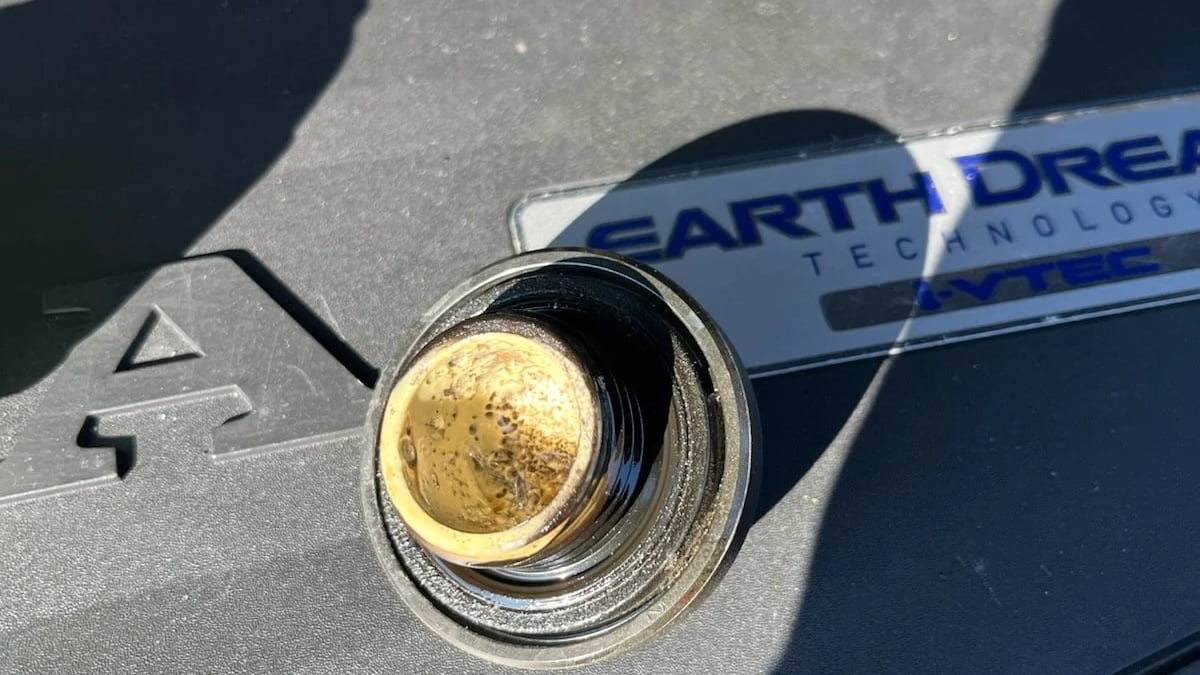The Honda CR-V continues to be one of the most popular compact SUVs, despite some owners choosing to stay with the older models. The Japanese model is preferred by many for its reliability, decent standard equipment, and all-around versatility. But while reliability is, generally, high, Honda owners are still not entirely safe from dealing with the occasional, unethical mechanic shops. One post in the CR-V owners’ club seems to be talking about one such case. Here's what the owner, who goes by username rc5781, says:
“I just got an oil change for my 2013 CRV Lx AWD at Jiffy Lube at 100,715 miles. The guy told me to come over and showed me the inside of the oil cap. It had a little residue on the inside of the cap.
He told me that there was "gunk" in my engine. He said he could "take care of it" for $109.
He said they recommend doing this every 50,000 miles.
I was suspicious and told him I would pass and look into it.
Isn't that the purpose of an oil change? To get rid of "gunk".
What do y'all think? Scamming?”
When does an engine have gunk?

Gunk or sludge can typically be found in a car's engine due to scarce or infrequent oil-change intervals. Prolonged exposure to high heat (which every internal combustion engine generates) leads to oxidation and breaking down of the engine oil, forming a gelatinous goo (gunk/ sludge). Go long enough without changing the engine oil, and you will notice clear signs of reduced performance due to sludge buildup.
If you push your engine more, there is a much higher likelihood that the oil will "cook” from high temperature and oxidize, which also causes it to lose its lubricating properties. The introduction of enough water/ coolant in the engine can also form sludge, but with a milkshake color instead of dark. Gunk can also block various oil passages, leading to very expensive repair bills while also putting additional stress on your engine's rotating assembly and valvetrain.
But what is really happening here?
Other forum members are quick to suggest solutions, some more valid than others. The first comment is exactly a question one should expect.
SVTfocusO3 says: “How often you change oil? Removing gunk, maybe wiping with a rag?”
Rc5781 (thread starter) says: “I've been going by the maintenance minder (around 5%). Now I'm going earlier at 15% since I have 100k miles on it.
There was a little bit of oil residue around the dipstick. I just wiped the area with some rubbing alcohol.
Never any visible leaks on the ground.”
Sequoiasoon chimes in with some valid questions and a plausible explanation while also providing images of his Honda Pilot oil cap (look in the text):
“Where do you live? Cold temperatures? Short trips? Male or female that they think they can take advantage of? The caps will build condensation that looks like cr#p, basically emulsified oil vapors. This is my Pilot with a bunch of cold days and short trips. Then a couple days later with longer drives. There will always be some "residue" in there. My motors are basically spotless but still get that. “
He also adds: “Do yourself a favor and try going to dealer or reputable independent shop that you may trust. Possibly even Walmart. Dealers often have coupons that they beat Jiffy Lube and other quick-change place. I used to work at Jiffy Lube when younger for extra cash. I won't go there unless something REALLY crazy happens, probably not even then. I quit as new manager and I didn't see eye to eye.
He wanted me to upsell the filters and services which they all do, it's how they make money. I'm a car guy and couldn't in clean conscience. I said leave me on the PIT, I was quick, accurate, no stripped plugs etc. Again, car guy with knowledge just needed some extra $$. I got many tips and great reviews from customers. Manager reviews?”
BrandonSmith says: “Scam. Just because there's crud in the cap doesn't mean there's crud like that in the oil, or parts of the engine coated in oil. As the previous commenter stated, it's vapor that has coagulated on the cap.
Typically, this vapor should go through your PCV valve and recirculate through the air intake. If you're getting condensation/vapor buildup like that on the cap/valve cover, I'd replace the PCV valve, clean the cap, and see if the buildup returns.
Replacing the PCV valve is simple. Check out YouTube.”
Coastie05 says: “Not necessary at all. Run!!”
ilovemyhonda88 says: “When you look into the oil cap opening, does it have sludge?
Next time take it to an actual mechanic and tell him to show you the drain bolt after he take it out to see for yourself if there is sludge.
Those quick lube place guys are there to make sales on commission. So, the more they upsell, the more he takes home.
His "take care of it" is him wiping off the cap and charging you $109.”
As for whether you should worry about your 2013 Honda CR-V's engine reliability, there are a few things you need to know.

The 2013 model year belongs to the fourth-generation Honda CR-V (2011-2016), which has a very high score for quality and reliability (4.6/5 Cars.com/ 86/100 J.D.Power). The K24C7 engine is, generally, considered a reliable unit that can go many miles. Still, there are a few things to look out for, and one of those common issues may lead to oil sludge.
1. Front crankshaft seal (front main seal) leak
2.Exhaust cam lobe failure – symptomized by a ticking noise and check engine light
3. Timing chain tensioner failure – although there have been known cases of K24 engines running without being properly synchronized, replacing the part timely (along with the whole timing kit) is crucial for ensuring the engine's longevity.
4. High oil consumption – certain K24 engines develop an unusually high oil consumption. The engine has developed a bit of a reputation as an “oil-burner”, but it seems to be a random issue. Some K24 owners report high oil consumption at 100,000 miles, while others report zero oil consumption even at 156,000 miles.
There is a popular Reddit thread for the K24 engine if you want to check it out. Regardless, this issue may lead to sludge buildup in the engine. However, the owner of this 2013 Honda CR-V has not reported any oil consumption.
This is an interesting case, indeed, and according to what I saw on this discussion, things seem to be “iffy” at Jiffy Lube. A classic case of wanting to take your money for almost no work?. If you have any insight or experience with such matters, I would be curious to "hear” your thoughts in the comment section below.
Dimitar Angelov's automotive interests made him an expert in a wide variety of vehicles. Japanese brands like Toyota are closest to his heart, although performance cars in general are his favorite segment, which is why he is constantly on the lookout for the best deals on the market. Dimitar Angelov's car passion and knack for the written word led him to complete a Master of Arts in Media and Communications, and classic car restoration. Dim is happy to get behind the wheel of any car and share his impressions. You can follow Dimitar on X, Linked-in, Instagram, and Facebook.
Main image: Ted Sluymer / Commons.wikimedia.org
In-text images: CR-V Owners Group












Comments
That "gunk" is moisture from…
Permalink
That "gunk" is moisture from the engine not staying at operating temperature for long enough to evaporated it from the crankcase. Change the oil more frequently, even if it doesn't reach the recommended mileage and take some road trips. It's possible that you have a thermostat stuck open.
Yeah, the 109 to clean your…
Permalink
In reply to That "gunk" is moisture from… by KC (not verified)
Yeah, the 109 to clean your engine is an absolute rip-off. Ridiculous. Use good synthetic quality oil. Get it from Walmart. They got a supertech brand advanced synthetic use that s*** it's just as good as mobile one and a good brand name filter. Google it and you'll see... Or just get the mobile one? It's more expensive and it's a little better. But the super tech from Walmart I think is made by warren oil.
It's almost as good as mobile one just cheaper.
Yes. Nothing kills an engine…
Permalink
In reply to That "gunk" is moisture from… by KC (not verified)
Yes. Nothing kills an engine quite like driving on short distances, not giving all the fluids a chance to reach operating temperatures.
Get your own oil, preferably…
Permalink
Get your own oil, preferably synthetic. Get your own oil filter. Stay away from fram and the cheaper ones. Wix is good. Brand name is good. Honda one is good. They're like 11 bucks. Take your oil from the Walmart and your oil filter. You can still take it to a decent reputable place and have them change your oil with your own oil and your own oil filter. Only a slight charge for this. You'll never have any issues. Yes, jiffy lube and those places that their oil sucks
If you make short trips in…
Permalink
If you make short trips in cold weather that can cause condensation that will look like the picture of the oil fill cap. Take the car on a longer trips, say fifty plus miles occasionally to get rid of the condensation.
Yes. And maybe step on that…
Permalink
In reply to If you make short trips in… by Curt (not verified)
Yes. And maybe step on that accelerator every now and then to give it some good "massaging"... on a properly warmed-up engine, of course.